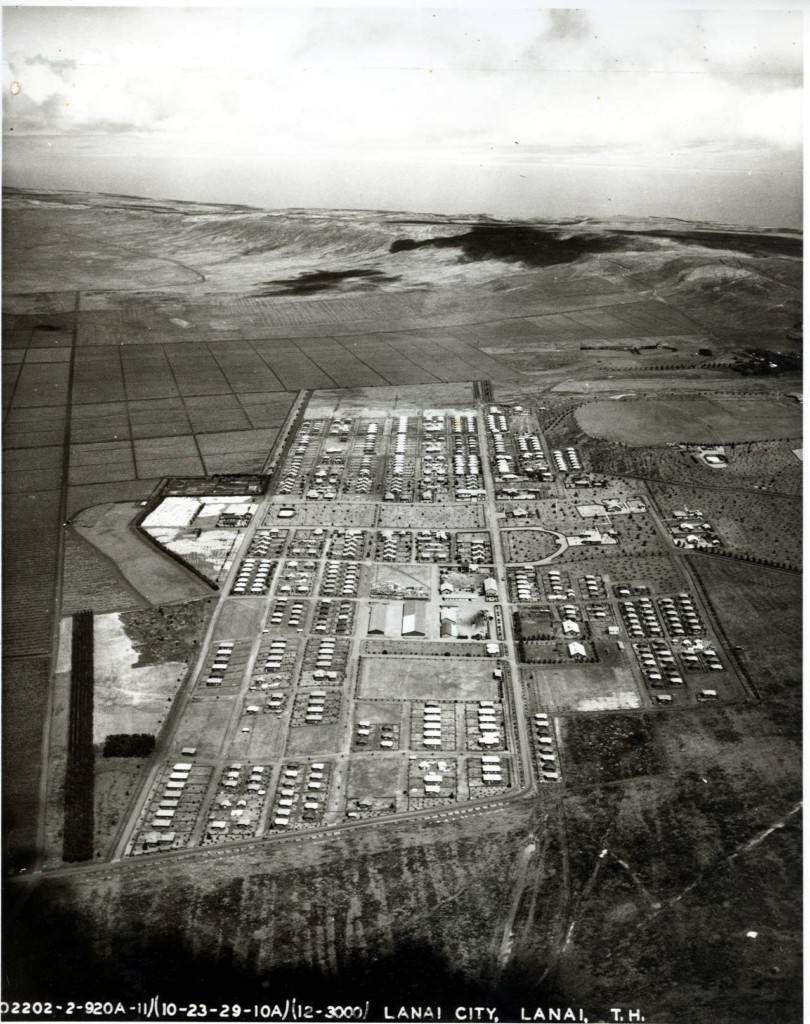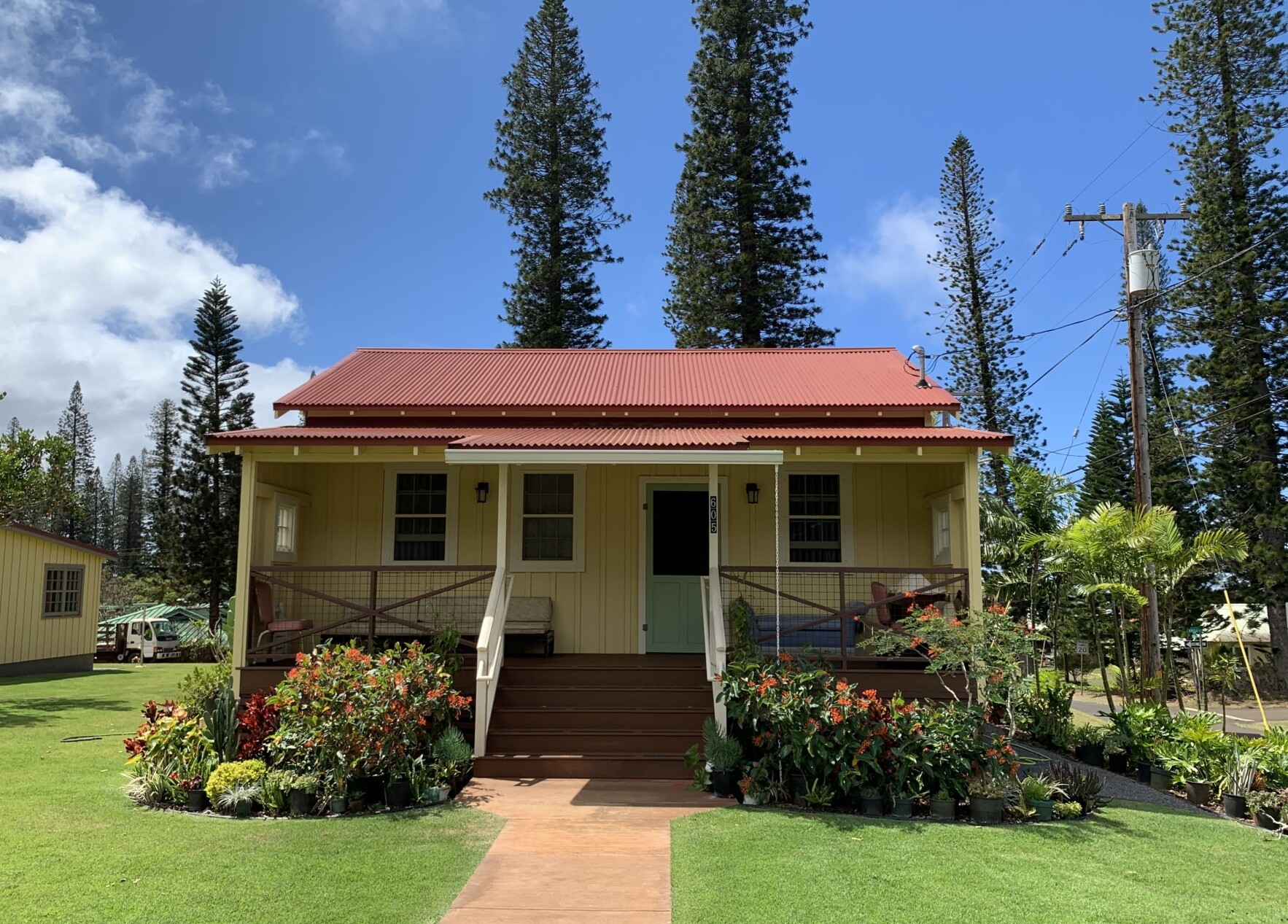Preservation Honor Awards Recognizes Lāna‘i City Historic Housing Program for Perpetuating Town Design and Community
4/15/2020: Anyone fortunate enough to be guided through a tour of historic Lāna‘i City knows its charms. The “Pineapple Island” no longer produces pineapple, but the built environment still reflects the design and community memories of the early 20th-century agricultural era.
Over the past five years, Pūlama Lāna‘i has engaged in a comprehensive program to preserve, maintain, rehabilitate, reconstruct and replace historic housing within Lāna‘i City. The program includes both treatments for existing buildings and the production of new infill housing.
Lāna‘i City was a planned community that followed the urban design principles of the Garden City movement, as adapted and interpreted by the Hawaiian Pineapple Company’s (HAPCo) “Village” planning standards in the early 1920s. The town plan followed the concepts of a central greenspace (Dole Park) with tree-lined streets and avenues, generous yards and setbacks for gardens and vegetation, and designated areas of housing, businesses, civic areas, industry and agriculture. It is considered the first planned community in the Territory of Hawai‘i (1923).

Aerial photograph of Lāna‘i City taken on October 23, 1929, looking northwest. Courtesy Lāna‘i Culture & Heritage Center.
Designed by engineer David E. Root and substantially completed by 1924, Lāna‘i City is the last intact extant example of “Garden City” and “Village” planning standards remaining in Maui County, and one of only three in the state (the others are the Hickam and Wheeler Historic Districts on military installations on O‘ahu, constructed in the 1930s-1940s).
According to the documentation submitted to nominate the Lāna‘i City historic district to the Hawai‘i Register of Historic Places, the town also contains the largest collection of intact plantation period buildings remaining in Maui County which were constructed almost exclusively by Japanese carpenters under the direction of contractors Kikuichi Honda (1923) and Masaru Takaki (1924-1925, 1926-1929). In addition, the district also includes buildings which were added later by contractor Thomas Tanaka (ca. 1938), HAPCo carpenters, and others (1930-1959).
Lāna‘i City was once home to some 3,000 plantation workers and their families and remains a home to their descendants and the destination for numerous family members who return annually as well as for visitors from around the world, off-shore homeowners, and tourists.
Some of the defining characteristics of the plantation-era housing include single-story houses built entirely of wood on post with a crawl space, corrugated hipped roofs, exposed rafter tails and multi-light windows (usually double hung or sliders).
The project included efforts to assess and provide appropriate treatment for the historic housing stock. Existing houses in good condition were rehabilitated while those in non-repairable condition followed historic plans and detailing.
“Whether renovating existing houses, replacing dilapidated houses with new, or constructing houses on empty lots, the goal of the work in Lāna‘i City has been to preserve the character while providing housing for the community,” according to historic architect Glenn Mason.
In one case, three original houses had been vacant and slated for demolition for years. Pūlama Lāna‘i chose to replace the homes with exact exterior replicas while upgrading interior spaces and floorplans. The project took over a year of work, including rezoning to allow for housing in an area that did not allow for residential use. The homes have been reoccupied by former tenants and their ‘ohana.
Other elements of the program included rehabilitation of four historic homes and construction of nine new homes that are compatible with the historic character. Three additional historic homes are planned for rehabilitation and are in the design phase.
For engaging in a comprehensive effort to improve housing for Lāna‘i City inhabitants while preserving the historic character of this significant historic town, the Lāna‘i City Housing project will be recognized with a Project Award through Historic Hawai‘i Foundation’s 2020 Preservation Honor Awards program.
The Preservation Award will be presented to Pūlama Lāna‘i, Mason Architects, Inc., i3ngeering, Sawar Structural Engineers, and Fukumoto Engineering.
The 46th Annual Preservation Honor Awards Ceremony was originally scheduled to be held in May 2020. However, the current public health crisis caused by COVID-19 has resulted in postponement of the public event. A new date will be selected and notices sent at a later date.



